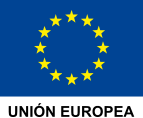ZFTool is a toolbox for quantification of cellular proliferation in vivo of the zebrafish through image processing methods.
If you use ZFTool, please refer to this paper: Carreira MJ, Vila-Blanco N, Cabezas-Sainz P, Sánchez L. ZFTool: A Software for Automatic Quantification of Cancer Cell Mass Evolution in Zebrafish. Applied Sciences. 2021; 11(16):7721. https://doi.org/10.3390/app11167721
Zebrafishes are injected with a green fluorescence protein (GFP) in order to visualize the cancer mass.
ZFTool eliminates the auto-fluorescence of the zebrafish through computation of area with different intensity thresholds and automatically computing the auto-fluorescence threshold, which is established for both images at 0hpi and 24-48-72hpi (hpi=hours post injection), respectively. ZFTool then computes the cancer mass area and mean intensity for both images and calculates the proliferation index.
Zebrafish (Danio rerio) is a model organism that has emerged as a tool for cancer research, cancer being the second most common cause of death after cardiovascular disease for humans in the developed world.
Zebrafish is a useful model for xenotransplantation of human cancer cells and toxicity studies of different chemotherapeutic compounds in vivo. Compared to the murine model, the zebrafish model is faster, can be screened using high-throughput methods and has a lower maintenance cost, making it possible and affordable to create personalized therapies.
While several methods for cell proliferation determination based on image acquisition and quantification have been developed, some drawbacks still remain. In the xenotransplantation technique, quantification of cellular proliferation in vivo is critical to standardize the process for future preclinical applications of the model.
ZFTool can establish a base threshold that eliminates embryo auto-fluorescence and measures the area of marked cells (GFP) and the intensity of those cells to define a proliferation index.
Usage
The analyzed images must be presented in their own folder following this format, being N the fish number and XX the hours elapsed after injection (hpi):
- Grey image at 0hpi, named
N - 0h bn.tif - Grey image at 24, 48 or 72 hpi, named
N - XXh bn.tif - GFP fluorescence image at 0hpi, named
N - 0h gfp.tif - GFP fluorescence image at 24, 48 or 72 hpi, named
N - XXh bn.tif
There are two examples included in the repository, in the folder Images, fishes numbers 2 and 8 with images at 0hpi and 48 or 72hpi, respectively:
* 2 - 0h bn.tif
* 2 - 0h gfp.tif
* 2 - 48h bn.tif
* 2 - 48h gfp.tif
* 8 - 0h bn.tif
* 8 - 0h gfp.tif
* 8 - 72h bn.tif
* 8 - 72h gfp.tif
With the included images you can run the following examples:
- Image folder:
Images - Fish number:
2 - Initial measurement hour (0hpi):
0 Final measurement hour (24hpi, 48hpi or 72hpi):
48Image folder:
Images- Fish number:
8 - Initial measurement hour (0hpi):
0 - Final measurement hour (24hpi, 48hpi or 72hpi):
72
Información
-
- Investigadores
- María José Carreira Nouche



